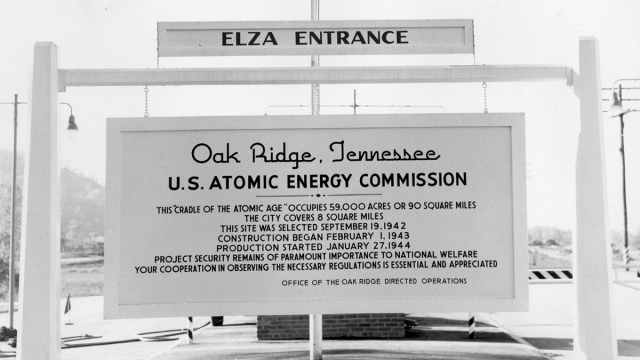
On February 18, 1943, in the midst of the second World War, ground was broken in rural East Tennessee for the first production building at the Y‑12 Electromagnetic Separation Plant. The plant’s job was to make enough enriched uranium for a new kind of bomb, an atomic bomb.
In a short time Bear Creek Valley, where the plant is located, was filled with machinery and the bustle of people on a mission. At its peak in 1945, more than 22,000 workers were employed at the site. Thirty months later the success of Y‑12’s mission was announced to the world when after two atomic weapons (the uranium bomb, Little Boy, and the plutonium bomb, Fat Man) were detonated, the Empire of Japan surrendered and World War II ended. Y-12 had separated the uranium used in Little Boy.
Since that time Y‑12’s missions have changed. Y‑12 played a key part in the production of thermonuclear weapons, helping win the Cold War with 8,000 people working around the clock to produce nuclear weapon secondaries.
Today, Y‑12 is a unique national asset in the manufacture, processing and storage of special materials vital to our national security and contributes to the prevention of the spread of weapons of mass destruction.
The nuclear science in Oak Ridge that ultimately ended the war also led to innovative advancements in medicine that continue today.